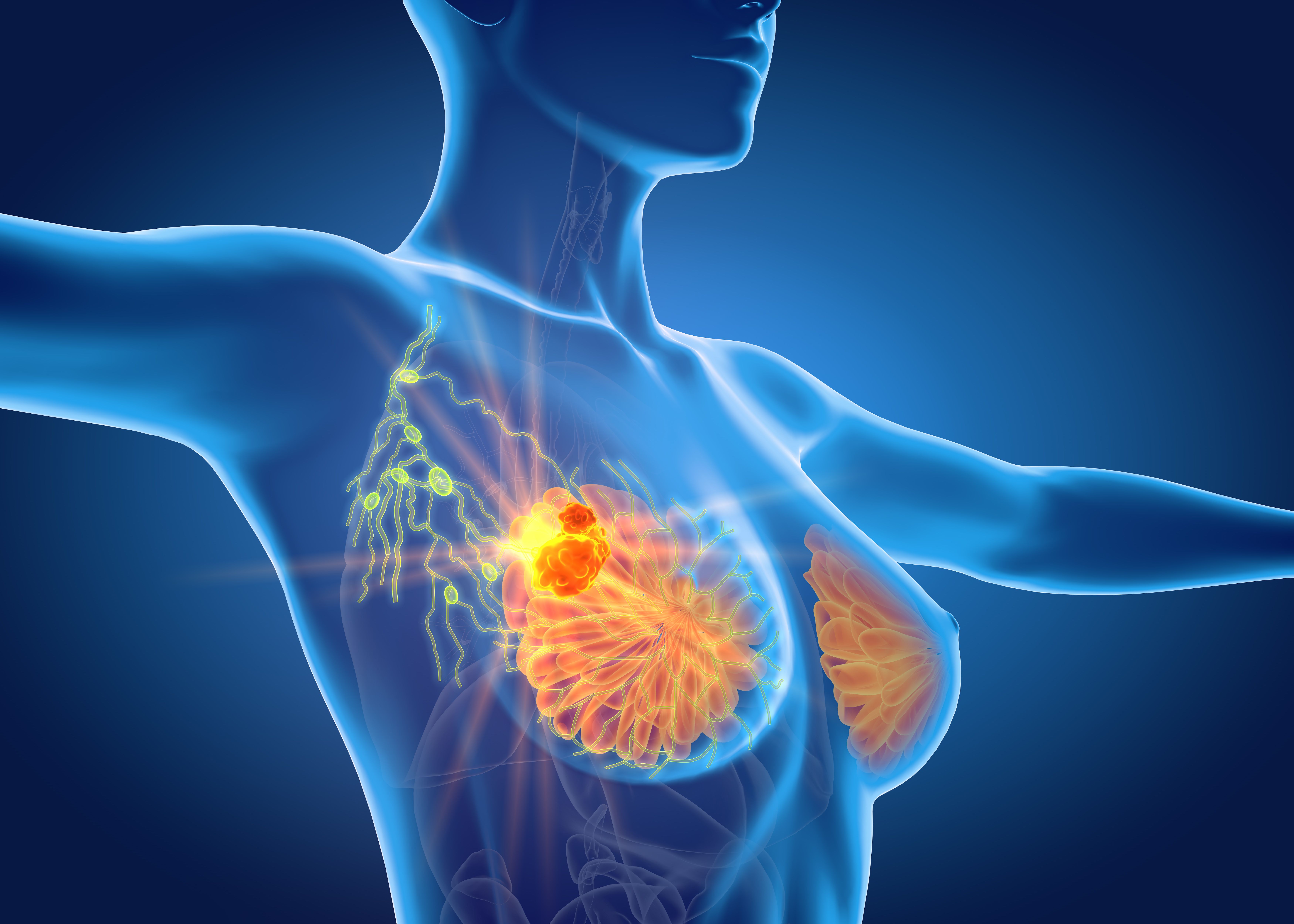Among patients with PIK3CA-mutated, hormone receptor (HR)-positive, HER2-negative locally advanced or metastatic (spreading) breast cancer, Itovebi (inavolisib) plus Ibrance (palbociclib) with Faslodex (fulvestrant) led to significantly longer progression-free survival (PFS) compared with placebo plus Ibrance with Faslodex. However, this treatment also led to a higher incidence of side effects.
According to study findings published in The New England Journal, “Our trial met the primary end point, showing that the addition of [Itovebi] to Ibrance-Faslodex resulted in substantially longer progression-free survival than placebo plus [Ibrance with Faslodex] in patients with PIK3CA-mutated, [HR-]positive, HER2-negative locally advanced or metastatic breast cancer whose disease had recurred during or within 12 months after the completion of adjuvant endocrine therapy,” the study authors wrote.
Glossary
Adjuvant: additional treatment that is given after surgery to reduce the risk of the disease returning.
Progression-free survival (PFS): time from randomization to the first occurrence of disease progression.
Objective response rate: the percentage of people whose disease shrinks or disappears after treatment.
Neutropenia: a lack of white blood cells.
Hyperglycemia: high blood sugar.
The median follow-up periods were 21.3 months for the Itovebi group and 21.5 months for the placebo group. The median progression-free survival was 15 months for patients receiving Itovebi, compared to 7.3 months for those receiving the placebo. Additionally, an objective response occurred in 58.4% of patients in the Itovebi group, while 25% of patients in the placebo group experienced an objective response.
Regarding side effects, the frequency of grade 3 (severe) or 4 (life-threatening) neutropenia was 80.2% in the Itovebi group, compared to 78.4% in the placebo group. In addition, grade 3 or 4 hyperglycemia occurred in 5.6% of patients in the Itovebi group and 0% in the placebo group, and grade 3 or 4 stomatitis or mucosal inflammation occurred in 5.6% of patients in the Itovebi group and 0% in the placebo group. Grade 3 or 4 diarrhea occurred in 3.7% of the Itovebi group and 0% in the placebo group. No cases of grade 3 or 4 rash were observed.
Serious side effects were noted in 24.1% of patients in the Itovebi group and 10.5% of patients in the placebo group.
Additionally, discontinuation of any trial agent due to side effects occurred in 6.8% of patients in the Itovebi group, while only 0.6% of patients in the placebo group discontinued for similar reasons.
“[Itovebi] plus [Ibrance-Faslodex] had a safety profile consistent with the safety profiles of the individual drugs in the regimen, and the percentage of patients who discontinued any agent in the [Itovebi] regimen because of [side effects] was low,” study authors wrote.
Out of a total of 325 patients with a median age of 54 years, 161 were assigned to the Itovebi group and 164 to the placebo group. Sixty percent of the patients were postmenopausal. The overall disease burden was high: 51.4% of the patients had metastases in at least three organs, 80% had visceral metastases and 51.7% had liver metastases. Most patients had previously undergone neoadjuvant or adjuvant chemotherapy (82.8%) and had not received a CDK4/6 inhibitor before (98.8%). Additionally, 47.7% of the patients had exclusively received neoadjuvant or adjuvant tamoxifen.
Patients received either Itovebi at a dose of 9 milligrams (mg), administered orally once daily from days 1 to 28 of each 28-day cycle, or a placebo that was also taken orally once daily. Both treatments were provided alongside Ibrance at 125 mg, administered orally once daily from days 1 to 21 of each 28-day cycle and Faslodex at 500 mg, administered intramuscularly on days 1 and 15 of cycle 1 and approximately every 28 days thereafter.
Reference
“Inavolisib-Based Therapy in PIK3CA-Mutated Advanced Breast Cancer” by Dr. Nicholas C. Turner, et al., The New England Journal of Medicine.
For more news on cancer updates, research and education, don’t forget to subscribe to CURE®’s newsletters here.




